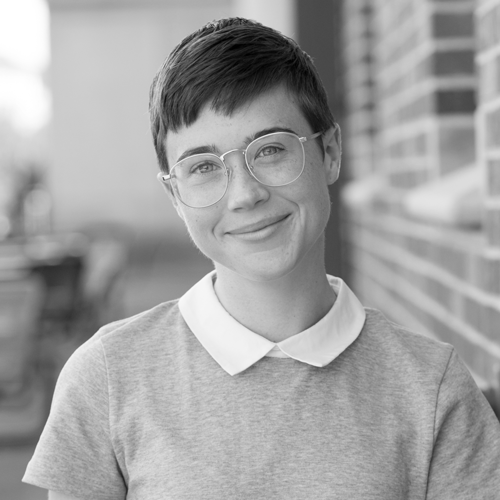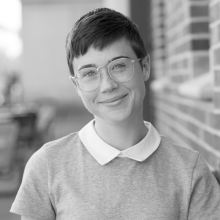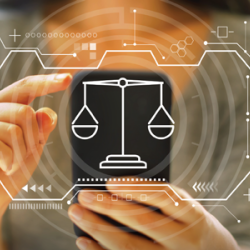Pandemic Positives Speaker Series Highlights Innovation and Partnerships, Part 1
Last month, IAALS kicked off our Pandemic Positives Speaker Series, bringing together a number of courts and legal service providers who, in the wake of the COVID-19 pandemic, transformed their day-to-day operations to continue serving the public throughout this critical time. These organizations quickly implemented new processes for providing both in-person and virtual services, ensuring access to information and assistance to those who cannot afford an attorney. With the pandemic still ongoing, and in an effort to share lessons learned across jurisdictions, IAALS is hosting this speaker series to bring together innovators with other attendees to learn about best practices. Videos and summaries of the first two events are available below. (Read about and view the last two events here.)
Keeping the Public Updated on Changes
On February 3, Christine Miller of Legal Aid Center of Southern Nevada and Lollie Roberts of the Superior Court of California, County of Sacramento, discussed how their respective organizations successfully kept the public up to date on the changes they were making in response to the pandemic.
“We knew the virus was not going to stop the need for legal assistance,” Christine Miller explained. “In fact, we saw the opposite—the need for legal assistance increased.” As courthouses closed and businesses shut down, Legal Aid Center of Southern Nevada pivoted to email, phone hotlines, online chats, and virtual trainings in order to administer their services; people utilized these technologies for help with everything from eviction to unemployment.
The family law self-help center also utilized email and phone hotlines, especially to assist victims of domestic violence with applications for temporary protection orders. In April, Legal Aid Center of Southern Nevada served nearly 11,000 people who needed help with protection order applications; in May, that number jumped to more than 12,600 and, the month after that, to more than 15,500.
“Applying for TPOs, how people can connect with our local courts, state emergency directives, the CARES Act, the CDC eviction moratorium, changes in immigration policies—all of this information we needed to get out to the public, who, for the most part, was staying in,” Miller said. The center’s management team decided to hire someone with experience in digital and media design in order to ensure their services were effectively publicized. (Before the pandemic, Legal Aid Center of Southern Nevada had just one person running their social media accounts, and posting on these accounts was neither planned nor overtly strategic.) This position is responsible for not only the center’s social media accounts, but video production, collateral creation, and updating the center’s various websites. Since hiring for this position, Legal Aid Center of Southern Nevada has experienced a significant increase in social media followers and engagement.
In addition, the center has created a legal and financial toolkit (in both English and Spanish) which covers a wide variety of subjects, from next steps after being laid off to where to obtain utility, housing, and food assistance. “And one thing we made sure that we did is share the toolkit with everyone we could think of, from our community partners and nonprofits to our congressional delegations.”
Lollie Roberts then described how the Superior Court of California, County of Sacramento, helped its customers navigate a surplus of coronavirus-related information. Roberts, who runs the family law self-help center, first laid out how busy the center was pre-pandemic; people utilized both in-person services as well as the center’s web portal. However, in March, the self-help center ceased in-person operations—and, although information pertaining to COVID-19 and court operations was front and center on the superior court’s website (orders, press releases, etc.), it was an overwhelming amount of information for people to wade through in order to find the information they actually needed.
“So, one of the first things that we did in my office is ask how are we going to get the message of what’s available and what’s out there to our public? Because they can’t understand these orders. Most family law litigants are self-represented, and these orders are written by judges and lawyers—they’re in legalese and they’re difficult to comprehend, even for us.” So, Roberts and her team created infographics about the various emergency orders, making sure to summarize essential information (such as how to get copies of records and how to request an interpreter) and to write them in plain language. The infographics are continually updated as new orders are posted and circumstances change.
In addition, the self-help center had to figure out how to indicate its drop-in domestic violence restraining order workshop had moved online—and where people could find it on the court’s extensive website. To accomplish this, the self-help center decided to include QR codes on flyers about the workshop and post them on the building’s front doors; the team also included the QR codes on handouts that were given to people who showed up at the courthouse. These QR codes have only been in effect for the past month or so, but they’ve effectively doubled the number of people attending the online workshops—likely due to the codes’ ability to mimic the drop-in aspect of the in-person workshops.
Successfully Collaborating with Partners
On February 17, Jonathan Pyle of Philadelphia Legal Assistance and Leanne Yoder of the Arizona Superior Court in Pima County discussed how their respective organizations worked with others both internally and externally to alleviate many obstacles that come with reform.
Philadelphia Legal Assistance immediately saw an issue with low-income people’s access to unemployment benefits—the online application was only available in English, and the agency staff was too small to assist the number of applicants that needed help. In response, the organization set up a remote hotline where operators could answer calls and fill out online applications for callers, if needed. Yet they didn’t have quite enough people to run the hotline entirely on their own—so, they reached out to others who may be able to help.
“The local law school said they had law students with time on their hands, and law firms had some people who were working from home and didn’t have enough to do—so they wanted to have opportunities to help,” Jonathan Pyle explained. Philadelphia Legal Assistance also put out a call through the local bar association, and soon had over 250 volunteers for the hotline. Volunteers were able to use their own phones and utilize a guide the organization created, as well as reference a Google Doc and engage in a live chat with an employee.
“Internally, it was a collaboration among the unemployment compensation experts, the technology expert, and our communications team, who knew how to create attractive graphics to advertise things.” Management also helped to ensure the project wasn’t taking up too much of anyone’s time.
Jonathan had some advice for both sides of a successful partnership. Philadelphia Legal Assistance learned to not accept volunteers for whom the project was not a good fit; to support volunteers with people, processes, and technology; and to end the project when the time was right. On the flip side, the organization valued volunteers who treated the opportunity as a professional commitment, took on
coordination and supervision responsibilities, and stayed within the scope of the project.
Next we heard from Leanne Yoder, director of the Law Library and Resource Center of the Arizona Superior Court in Pima County. “When the pandemic hit, the question—which so many of you have wrestled with—became how can we continue to be available to provide services to our customers while still protecting our staff?” Ultimately, the team decided to close the library to the public but keep staff on site, delivering court forms via an unstaffed pick-up location outdoors.
“We realized really quickly that the success of our new way of serving customers absolutely hinged on getting buy-in from staff in the three departments down on the first floor, who were the first point of contact for the public.” In order to do this, Yoder and her team did several things:
- Tried to anticipate how the law library’s closure would affect the other departments, and share this information with department supervisors;
- Explained why they were doing things a certain way (for example, placing the pickup location outside the building in order to reduce chances of exposure);
- Listened to partners’ concerns and laid out how they would address them;
- Provided partners with any resources they would need (for example, the most frequently requested forms);
- Acknowledged the impact this would have on their partners, and thanked them in advance; and
- Checked in periodically to see how things were going as well as see if adjustments needed to be made.
We are so grateful to the speakers for their insights and inspiration, as well as to everyone who attended. Please join us for the next two sessions in our Pandemic Positives Speaker Series, where we’ll hear about transforming in-person legal services into virtual services on March 11 and balancing the necessity of remote services with customers' in-person needs on March 25.



